- Home
- Peter Ackroyd
Foundation Page 11
Foundation Read online
Page 11
This was the enemy that King Harold most feared. William had no possible claim to the English throne except by right of conquest. And that is what he set out to achieve. It was in many respects a hazardous enterprise. The Normans had no fleet; the ships for the invasion, more than 500, would have to be built. William was also confronting a formidable adversary; the English state was wealthier and more powerful, with the potential of raising far more soldiers for the fight. The fortunes of battle were in any case uncertain, which was why the pitched conflicts of armies were avoided at all costs; it was better to harass, and to ravage, than to rely upon the outcome of one event.
Yet the force of the duke’s will was insurmountable; he persuaded the lords of Normandy, and certain French allies, to follow him across the sea. He promised in return innumerable riches from a country as prosperous as it was fruitful. William also enlisted the help of a higher power. He persuaded the pope to give his blessing to the enterprise, on the dubious grounds that Harold had violated a sacred oath taken in his submission to the duke. The pontiff sent William a ring containing one of the hairs of St Peter. In the same period William placed his daughter, Cecilia, into a nunnery at Caen. He had in effect sacrificed his daughter to God in the hope of a victory, just as Agamemnon sacrificed Iphigenia before sailing to Troy.
William made preparations for the great fleet to be collected on the Channel coast at Dives-sur-Mer by the middle of June 1066. 14,000 men were summoned for the onslaught. Harold, knowing of the naval threat, stationed his fleet at the Isle of Wight and posted land forces along the Channel coast. Yet the French army was kept in port by contrary winds. On eventually taking sail for England it was blown off course and was obliged to take shelter in the port of Saint Valeéry-sur-Somme. There it remained until the last week of September. Never has an invasion been so bedevilled by bad luck, and it must have seemed to William’s commanders that divine help would not necessarily be forthcoming.
Meanwhile, Harold waited. For four months he kept his forces prepared for imminent attack. Then on 8 September, he disbanded them. Provisions were running out, and the men needed urgently to return to their farms. He may have been informed of the abortive sailing of William’s fleet and calculated that, with the season of storms approaching, there would be no invasion this year. Soon after his return to London, he learned of a more immediate danger. As the Anglo-Saxon Chronicle puts it, ‘Harald, king of Norway, came by surprise north into the Tyne.’ On 20 September, Harald Hardrada descended upon York. On hearing this unwelcome news Harold mustered his retainers; he marched north very swiftly, riding night and day, picking up local forces as he went forward. The first that the Danish army knew of his arrival was the sight of the dust thrown up by the horses. On 25 September he engaged the enemy at Stamford Bridge where he obtained a complete victory. It was a measure of his competence as a military commander. Harald Hardrada was killed in the course of the battle, marking the end of the Viking interest in England. ‘A great man,’ Harold said of Hardrada, ‘and of stately appearance. But I think his luck has left him.’
Harold’s own luck was soon dissipated. He was, in effect, the last of the English kings. As soon as he had celebrated the victory over the Norwegians, he received news that William had launched his invasion force. The duke had put a lantern on the mast of his ship, leading the way across the Channel. The Norman force landed in Pevensey Bay at nine o’clock in the morning on Thursday, 28 September 1066. It was the most fateful arrival in England’s history. From Pevensey Bay the Normans rowed around the coast to Hastings, which they considered to be more favourable terrain. William built a makeshift castle here, and proceeded to ransack the adjacent villages. But he did not march along the road to London; his position was essentially defensive, close to his ships.
Harold received word of William’s invasion two or three days after the event and immediately marched southward with the core of his army to meet the enemy in Sussex. He acted very promptly, but his troops had just fought an arduous battle in the course of which their numbers had been reduced. Haste may have precipitated defeat. He was hoping, perhaps, to catch the Normans by surprise just as he had surprised Harald Hardrada; he was undoubtedly trying to confine them on the little peninsula of which Hastings was a part. He knew the territory well; Sussex was his native country, and he possessed large estates there. By 13 October he had attained this objective. He had told the local Sussex militia to meet him at ‘the hoary apple-tree’ on Caldbec Hill, but William received word of the forthcoming assault. He was able to lead his forces against an English army that was not properly assembled.
The Norman troops were marched in sight of the English force waiting on Caldbec Hill, the highest ground available; the Normans took up battle order on the southern slope of the hill, in what was theoretically an inferior position. The location of the English, on the summit, was later marked by the high altar of Battle Abbey; they were pressed tightly together, whereas the Normans were in more military formation. The English had some 6,000 or 7,000 men, but they were outnumbered by the Normans. The English were on foot, according to their normal practice, whereas the Normans had a large force of cavalry waiting in the rear.
So battle was joined. The Normans cried out ‘God is our help’ as they ran against the enemy, while the English called upon ‘Christ’s rood, the holy rood!’ William wore sacred relics around his neck. As the Normans advanced upon them, the English put up their shields in order to form a ‘wall’. They were essentially in a defensive formation, and it seemed that they were rooted to the spot. But the Normans had another tactic. On two occasions they pretended to flee from the enemy, only to wheel around and cut off their pursuers. The core of the English army, however, held its ground and fought all day. Then Harold was killed, at dusk, by a stray arrow. With their leader gone, the soldiers weakened. They fled into the night. If Harold had not fallen, his forces might have prevailed. But ‘if ’ is not a word to use in history.
William and his army rested for five days, and then advanced on London by way of Dover and Canterbury. He was now in a foreign country still governed by men who were unwilling to submit to him; he was surrounded by foes. The earls of the northern shires were implacably opposed to him, as were the people of London itself. So he trusted his violent instincts; he took the offensive and began a campaign of terror. He was beaten back at London Bridge, and in revenge he burned Southwark to the ground. He then lit a circle of fire around London, ravaging the countryside all around; he left a trail of destruction and rapine through Hampshire, Surrey and Berkshire. The entries for ‘waste lands’ in Domesday Book tell the story of his progress. The leaders of the English, trapped in London, now agreed to submit. A delegation came to Berkhamsted, in Hertfordshire, and formally yielded to his power. The English were accustomed to foreign kings, after all, and the transition from Canute and the half-Norman Edward the Confessor to William was not considered unacceptable. Surrender was preferable to resistance and further bloodshed. With the death of Harold, too, they lacked an effective war leader.
William then led his troops into the capital. There may have been some local resistance among the Londoners, but his victory was complete. He was crowned king of England on Christmas Day in Westminster Abbey. As duke of Normandy, however, he was still in theory a vassal of the king of France. This dual status would bear bitter fruit in the years, and centuries, to come. From this time forward England would be involved in the affairs of France, and of western Europe, with many bloody battles and sieges that did not really come to an end until the defeat of Napoleon in 1815.
8
The house
The British roundhouse, the Roman villa and the Anglo-Saxon hall – many of them built in the same place through successive centuries – have gone into the earth. A few ruined villas remain as evidence of ancient civilization, but most of them are now part of the land on which they once rested.
In the eleventh and twelfth centuries the standard house consisted of one square room on the
ground floor, with another square room built above it; access to the latter was generally granted by means of an external staircase. The furniture was simple, and scarcely varied at all from that of the Anglo-Saxons. A board laid on trestles acted as a dining table, and a wooden bench was the primary form of seating. In the houses built of stone, alcoves or recesses in the wall could be used for the same purpose. There were very few chairs or stools, except for the chair of state in noble households. Some of the richer families might own chests, coffers and cupboards; the bed was essentially a bag of straw laid upon a carved frame.
Only the wealthy possessed houses of stone with a ‘hall’ on the ground floor. A larger proportion of families owned houses built of wood and thatched with straw or reeds or heather; the windows boasted no glass, but wooden shutters could be barred at night for safety and comfort. Nevertheless the wooden house was always draughty and smoky. It was generally on two floors, like its stone counterpart, with a living room and kitchen on the ground floor; on the upper storey was a bedroom for the master of the house and his family. In the poorer dwellings the inhabitants would sleep on the floor, with heather or straw as their bedding. There might be a wooden booth in front of the house, where goods and produce could be sold; behind the house might be located a warehouse or small factory where those goods were manufactured.
The poorer sort had no such resources, most of them living in huts of wattle and daub that were little different from those of the early Britons. At the level of absolute need, there are no variations. Peasant buildings, in the countryside, had a limited rate of survival; they either crumbled, or were pulled down, within two generations. They rise from the land and return to it. A form of tenure in Hampshire was known as ‘keyhold tenure’; if a person could build a hut or house in one night, and have his fire lit before morning, then his residency was assured.
The style and method of peasant construction survived for many hundreds, if not thousands, of years. At the beginning of the twentieth century, for example, Thomas Hardy recalled the method of building used in his childhood. ‘What was called mud-wall’, he wrote, ‘was really a composition of chalk, clay and straw – essentially unbaked brick. This was mixed up into a sort of dough-pudding close to where the cottage was to be built. The mixing was performed by treading and shovelling – women sometimes being called in to tread – and the straw was added to bind the mass together … It was then thrown by pitch-forks on to the wall, where … it was left to settle for a day or two.’ When the fabric had dried and hardened in the sun, the roof was built of thatch. This was the method used by the Britons before the coming of Rome. It was used by the English during the reign of Victoria.
The dimensions of a modest thirteenth-century house are given in a Worcestershire court roll of 1281; it was of one storey, 30 feet long (9 metres) and 14 feet broad (4.25 metres), with three doors and two windows. The windows were on each side, to be left open when a cool breeze blew, but stuffed with straw or fern in inclement weather. The family would have eaten and slept together within the same room. This was not a period in which the private self can be said to exist. A thirteenth-century cottage excavated in Berkshire consisted of one room, 10 by 12 feet (3 by 3.6 metres), and another in Yorkshire had dimensions of 10 by 20 feet (3 by 6 metres). The room was generally open to the roof, with a central hearth. In the longhouses of the same period the rooms were used for livestock as well as people, together with a store of grain. The inhabitants were living and sleeping side by side with their animals.
Houses were lengthened, or rebuilt, or extended, as time and occasion demanded. Certain improvements, from human industry and human ingenuity, were possible. The houses of the eleventh century were made of clay without timber frames; by the thirteenth century most houses were constructed with timber frames and, less than a century later, the walls were being erected on stone bases to curb damp and decay. The beaten-earth floors were generally strewn with rushes that became so moist and dirty that they were known as ‘the marsh’. The first evidence of chimney pots comes from Whitefriars, just south of Fleet Street, in London; in 1278 Ralph de Crockerlane was selling clay chimney pots in that quarter.
Yet the essential structure of the dwelling remained identical for many hundreds of years. The furniture was scanty, household items rudimentary; the spoons and dishes were generally made of wood by members of the family. There might have been a few brass pots and cups. A bed acted in the daytime as a seat. These were bare rooms for bare living. It is surprising, perhaps, that richer and poorer agricultural workers of England tended to live in the same kind of dwelling; whatever their economic circumstances, they reverted to the ancient model. It is another indication of the customary traditions of the countryside. In the larger houses the same identity of purpose can be found, with a central hall flanked by smaller rooms. One gradual change did occur: towards the end of the thirteenth century more provision was made, at least in the larger towns, for adequate drainage and cesspit systems.
Houses from the fourteenth century have survived in far greater numbers than those of any earlier period. They are generally more solid and substantial than their predecessors, and in London they often attained three storeys with a height between 30 and 40 feet (9 and 12 metres). A visitor from the country would have been surprised by these urban ‘skyscrapers’, quite a new thing in England. From the middle of fourteenth-century London, too, come fragments of small yellow bricks. The townhouse of a wealthy merchant from that century was highly decorated, with interiors of colour and of costliness; tapestries, curtains and hangings draped the walls. Tiles, rather than rushes, were laid upon the floors; finely glazed pottery was imported from France and Spain, sparkling glass from Venice and silks from Persia. This was still in great contrast to the rudimentary furnishings of the ordinary English house, but the appetite for luxury and colour slowly spread among the wealthier families. In the fifteenth century inventories of the richer households include such items as cushions and tapestries, painted cloths and carpets, basins and screens, wainscoting and coverings for benches and chairs. The colours would by modern standards of taste be considered inharmonious, with strident yellows and purples and greens placed beside each other. The intended effect was one of brilliancy and vivacity. That is why an image of the sun was sometimes embroidered on cloths and tapestries and articles of dress. In a similar spirit men often wore shoes of different colours. Brick and glass became more common. Open hearths were being replaced by fireplaces.
The objects of medieval life are still recovered from the ground. Traces of wooden stools and of other pieces of furniture, undisturbed for many hundreds of years, have been found at Winchester and Beverley. Two locks were smashed with an axe before being discarded; another lock was repaired by its owner. The vast quantity of medieval locks and padlocks, found within the excavated spaces, suggests a life of threat or at least of suspicion and caution. Medieval life was dominated by the key.
Candlesticks, of lead and copper alloy, have been taken from the earth by archaeological teams. By the fifteenth century these candlesticks have become larger, an indication that candles had increased in thickness. This in turn suggests greater wealth. So from small material details we may be able to reach larger conclusions. Hanging lamps of glass began to take the place of hanging lamps of stone or ceramic by the end of the thirteenth century; oil lamps, in which a wick floated upon a small pool of oil, were being replaced by candles at the beginning of the fourteenth century. Vessels of wood (generally of ash) are to be found everywhere, but glass was becoming popular among the wealthier families by the fourteenth century. There are glass flasks, jugs, and of course glasses. Glass urinals, in which urine was examined for the signs of health or disease, are relatively common.
Other archaeological relics of the dead have been found. A balance to weigh coin had been adjusted to give false readings, but at a later date it was deliberately destroyed; perhaps its owner had then been placed in the pillory. Vessels of copper alloy or of ceramic were of
ten patched up, suggesting how in the domestic economy the cheapest items were valued; cracks in the ceramic surface were sealed with lead. An iron helmet was inverted, supplied with a handle, and turned into a cooking vessel. Spindles are found everywhere. So are needles and thimbles, from an age when both men and women were skilled in sewing cloth and leather. It was a common and necessary household occupation. Many spoons and spoon-handles survive, some of them inscribed with a pattern or mark to indicate ownership; this gives a picture of communal dining. Some vessels have been found bearing the legend CUM SIS IN MENSA PRIMO DI PAVPERE PENSO – ‘When you are at the table, first think of the poor’. A brooch of the thirteenth century has, as its inscription, ‘I am a brooch to guard the breast, that no rascal may put his hand thereon.’ A ring of the fourteenth century has the legend ‘He who spends more than belongs to him, kills himself without a blow.’ Whistles, book clasps, writing implements, hooks, hinges, chests, caskets, leather shoes, are all mute testimony of a forgotten life.
The most commonly found location is naturally that of the ‘undercroft’ or basement. Many of them are lined with chalk or flint, and in some of them the tiles still cover the floor. There is evidence of steps leading from the street, and of small windows on a level with the ground. The life of the past leaves other marks on the earth. A worn floor will trace the path of a door once swinging to and fro. Go in.

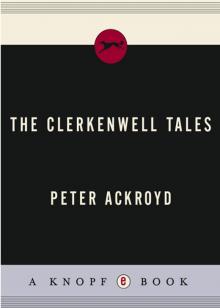 The Clerkenwell Tales
The Clerkenwell Tales The Canterbury Tales
The Canterbury Tales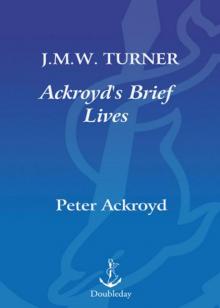 J. M. W. Turner
J. M. W. Turner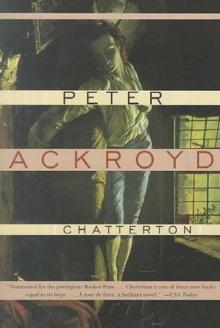 Chatterton
Chatterton The Canterbury Tales – A Retelling
The Canterbury Tales – A Retelling Alfred Hitchcock
Alfred Hitchcock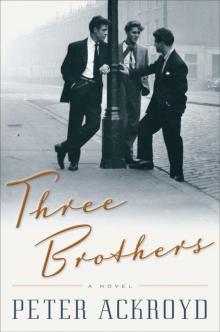 Three Brothers
Three Brothers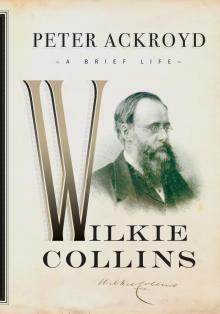 Wilkie Collins
Wilkie Collins Venice
Venice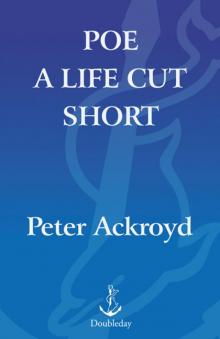 Poe
Poe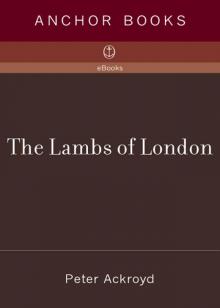 The Lambs of London
The Lambs of London London
London Queer City
Queer City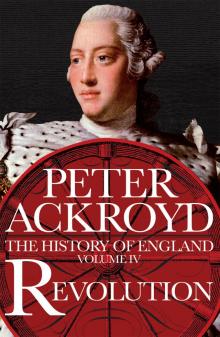 Revolution, a History of England, Volume 4
Revolution, a History of England, Volume 4 Venice: Pure City
Venice: Pure City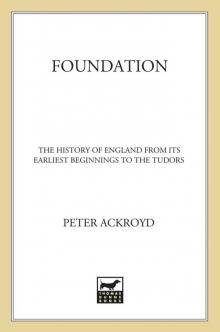 Foundation
Foundation Thames
Thames The Plato Papers
The Plato Papers The house of Doctor Dee
The house of Doctor Dee Rebellion: The History of England from James I to the Glorious Revolution
Rebellion: The History of England from James I to the Glorious Revolution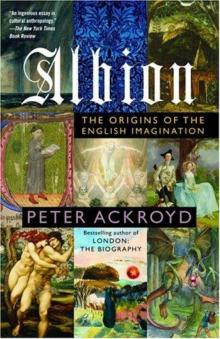 Albion: The Origins of the English Imagination
Albion: The Origins of the English Imagination The Fall of Troy
The Fall of Troy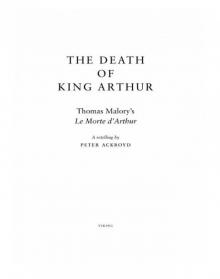 The Death of King Arthur
The Death of King Arthur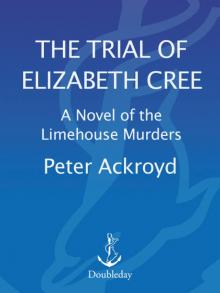 The Trial of Elizabeth Cree
The Trial of Elizabeth Cree London: The Biography
London: The Biography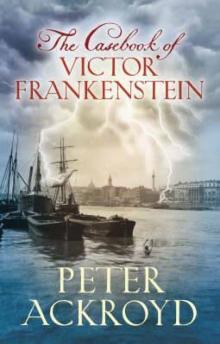 The Casebook of Victor Frankenstein
The Casebook of Victor Frankenstein Hawksmoor
Hawksmoor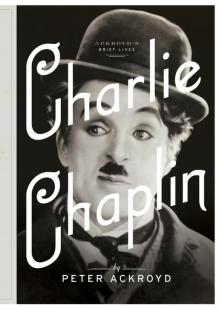 Charlie Chaplin
Charlie Chaplin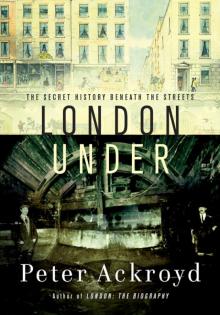 London Under
London Under